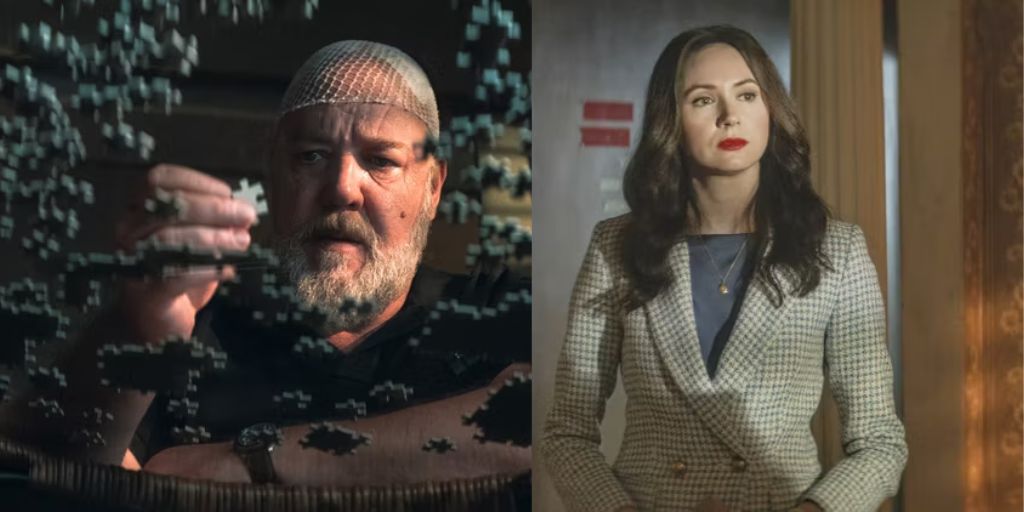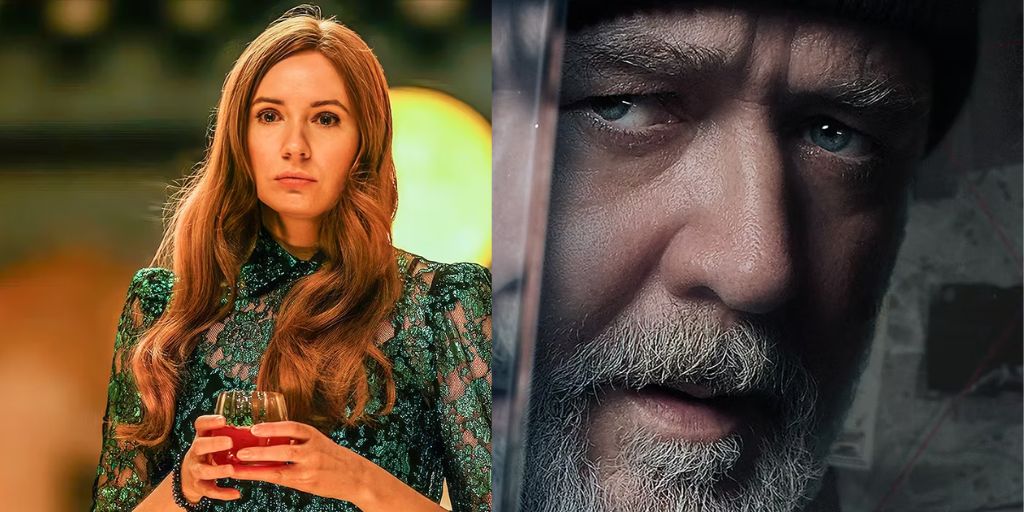Adam Cooper’s film adaptation of the 2017 novel The Book of Mirrors may not be a perfect fit for Russell Crowe, the Academy Award-winning actor. The film, directed by Cooper, shows Crowe as a retired detective who suffers from Alzheimer’s disease.
The movie’s complex and dark narrative fails to be entirely coherent but offers an intriguing plot that ultimately arrives at a single, chilling conclusion. Crowe portrays a former detective grappling with the effects of Alzheimer’s, who is unexpectedly drawn back into an old case he had closed years earlier.
As his experimental treatment starts to yield results, he decides to revisit this unresolved case, hoping it might aid his recovery and unlock his lost memories.
What Happens in the Film?
Roy Freeman, once a highly skilled detective, faced a dramatic downfall after a drunk driving accident ended his career. His troubles were further compounded by an Alzheimer’s diagnosis that left him struggling with memory loss and confusion. Recently, he underwent an experimental surgery that, while painful, offers a glimmer of hope. His life takes a dramatic turn when he is asked to investigate an old case that he had previously closed.
The case involves Isaac Samuel, a man sentenced to death who has only a month left before his execution. Roy’s encounter with Isaac Samuel thrusts him into a maze of confusion. Roy is unable to recall the details of the case he resolved ten years ago.
Isaac, convicted of killing Professor Joe Wieder, maintains his innocence, and something about his claim strikes Roy as sincere. Isaac provides Roy with a lead: Richard Finn, a man who had visited Isaac in prison and claimed to be writing a book about the murder.

Although Richard is later found dead from a fentanyl overdose, his incomplete memoir provides valuable clues for Roy’s investigation.
Richard Finn was obsessed with Laura, a psychology student who worked under Joe Wieder. Richard’s relationship with Laura led him to Joe, a renowned scientist. Joe was known for his brilliant mind but also had a reputation for taking credit for others’ work and engaging in inappropriate relationships.
Isaac Samuel was an easy target for the crime, and there were issues with how Joe’s caretaker, Wayne, was questioned. Wayne’s description of Joe Wieder painted him as a brilliant yet womanizing scientist who recorded his sexual encounters, including those with patients like Diane Lynch.
Wayne’s attempt to run over Roy, which resulted in his own death, adds to the mystery. Laura, now known as Elisabeth Westgate, adds to the confusion, especially with Roy’s haunting flashbacks of her.
Roy’s former partner, Jimmy Remis, was the one who signed off on all the documents related to the case. While Jimmy appears friendly, Roy feels that he might be hiding something about what truly happened years ago.
Did Laura Baines Steal Joe Wieder’s Thesis?
In a story involving a charming professor and a doctoral student who might have been infatuated with him, it’s often assumed that the professor might steal credit. This assumption appears to be true in the case of Professor Joe Wieder and his assistant, Laura Baines.
Roy Freeman’s perspective on the case is significantly shaped by Richard Finn’s true-crime memoir. According to Richard, Laura was a genius who had a relationship with Joe Wieder. Laura’s name appeared alongside Joe’s on a book copy, and she claimed authorship of Joe’s thesis.
However, this claim seems weak, given that Laura’s career advanced with new findings and a name change to Elisabeth Westlake. Laura argues that her real name was tainted by Joe’s murder, but this reasoning seems weak since Isaac Samuel was already convicted.
Laura’s manipulations suggest she might have stolen Joe’s credit. Her attempt to discredit Roy by providing a tape revealing his wife’s affair with Joe further raises suspicion. Laura’s actions seem aimed at protecting her reputation and ensuring that her deception remains hidden.
Why Did Wayne Try to Kill Roy?
Wayne, grateful to Joe Wieder for giving him a chance to start anew, struggled with the trauma from his time in Iraq. Joe offered Wayne relief from his painful memories with pills, but the side effects were severe. When Roy reopened the case, Wayne became a suspect once more.
Laura manipulated Wayne’s fear, leading him to believe he was a suspect due to Richard’s memoir. Laura’s plan included using Wayne to kill Roy and Richard to safeguard her reputation.
Wayne’s failure to kill Roy and the presence of fentanyl in his car suggest Laura’s involvement in these events. Wayne’s actions, driven by Laura’s manipulation, highlight how she sought to maintain her facade by using others as her pawns.
Was Roy Freeman the Real Murderer?
Alzheimer’s affects both memory and identity. Roy Freeman, without his memories, follows his instincts to save Isaac Samuel. The experimental treatment that aims to restore his memories brings back disturbing flashes. Roy suspects his former partner, Jimmy Remis, who signed all the legal documents related to the case.

Roy is torn between trusting Jimmy and believing Laura’s accusations. Jimmy’s financial problems and possible extortion of Laura add to the suspicion. As Roy’s memories return, he discovers that he might have been involved in Joe Wieder’s murder. Laura’s manipulations and Roy’s past actions connect to the crime.
The story concludes with Roy’s memories being a curse, as he confronts the dark reality of his actions. In Sleeping Dogs, the resurfacing of Roy’s memories validates Richard’s view of their unstable nature.
The film depicts how Roy’s search for the truth leads him to confront his own dark past and the harsh consequences of his actions. The final realization that the killer Roy sought is actually himself adds a chilling twist to the story.


















